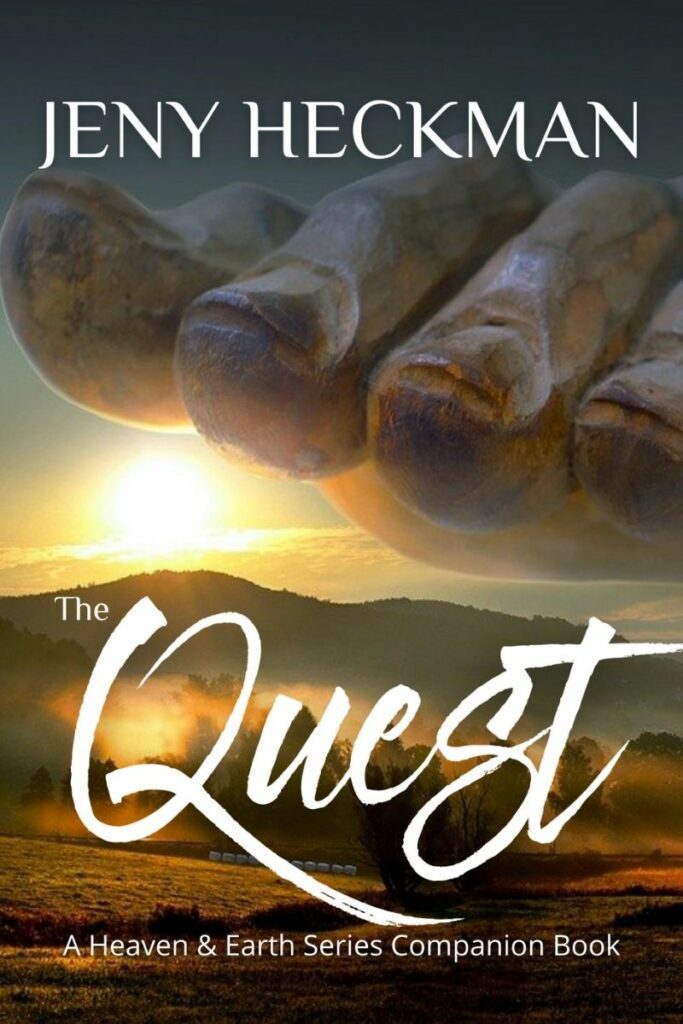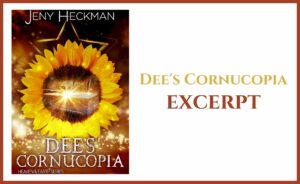
Reading Ancient Greek Mythology in my childhood developed a deep interest in reading which prompted me to read many other books over the years.
Reading Ancient Greek Mythology in my childhood developed a deep interest in reading which prompted me to read many other books over the years. I love the ancient soap opera-like cast of Greek gods and goddesses. I was fascinated by tales of gods and goddesses, especially heart-breaking tragedies. Books on Greek mythology or containing an element of Greek mythology are one of my favorite reads. They inspired me to create my own stories about Greek gods and goddesses.
Dee’s Cornucopia is book 2.5 of my Heaven and Earth series, which is a fantasy book series about the descendants of the Greek gods in modern times. The heroine of Dee’s Cornucopia is Dee (Walker) Taylor, a feisty grandmother from the Heaven & Earth series. She is a fan favorite. She doesn’t tolerate nonsense. Dee is a spark plug that makes everyone jump around her.
Dee’s Cornucopia tells the story of Dee’s life, from meeting her beloved husband to experiencing a personal tragedy and communing with Demeter, the Greek goddess of abundance. … So, entitling her book, Dee’s Cornucopia was a no-brainer for me! Dee creates abundance! Dee is a breeder! She can grow anything! The Cornucopia is also the name of Dee’s nursery in Hawaii.
In classical antiquity, the cornucopia (/ ˌkɔːrnjəˈkoʊpiə, ˌkɔːrnə-, ˌkɔːrnu-, ˌkɔːrnju- /), from the Latin cornu (horn) and copia (abundance), also called the cornucopia. The corn of abundance was a symbol of plenty and food, usually it’s a large horn-shaped container filled with produce, flowers, or nuts. Baskets or panniers in this form have traditionally been used in Western Asia and Europe to store and carry newly harvested food items. The horn-shaped basket was carried on the back or wrapped around the torso, leaving the harvester’s hands-free to gather. Many ancient Greek statues depict one or the other God holding a cornucopia full of riches.
Its origins began with the story of the birth and the feeding of baby Zeus (the god of the Greeks and the god of thunder).
Zeus was the youngest son of the Titans, Cronus, and Rhea. Cronus ate Zeus’s siblings: Poseidon, Hades, Hestia, Demeter, and Hera. However, Rhea, his mother, had a plan. She gave Cronus a rock swaddled like a baby to eat instead, and hid baby Zeus in a cave on the Island of Crete.
In the cave, Zeus was raised in secret with the help of nymphs and a goat named Amalthea. Her milk helped young Zeus grow strong. One day, when Zeus was playing with Amalthea, he accidentally broke one of her horns with his superpower. But Zeus being Zeus, he also had an unusual ability. The broken horn was touched by his divine power, providing endless nourishment.
Soon came the day when Zeus was mature enough to claim the Kingdom of the World. However, Amalthea had two parting gifts for Zeus – her skin and one of her horns. She was then placed among the stars in Capra, the constellation surrounding Capella.
Her hide was used to create Zeus’s mighty thunder shield, Aegis. When the constellation Capra rises, it marks the start of the stormy season on the coasts of Greece. In ancient Greek, the word “aigis” means both “stormy weather” and “goatskin”.
As I mentioned earlier Amalthea’s horn had a special ability. It would give the owner whatever they wanted. Did you want food? No problem! Did you want more money? No problem again! As a special thanks to Melisseus, the king of Crete who helped hide young Zeus, the horn was given as a gift to his daughters.
Zeus went on to liberate his brothers and sisters by giving Cronus an herb that made him vomit them up. They then battled Cronus and the other Titans in the underworld, Tartarus. After overthrowing Cronus, Zeus was confronted with giants and the monster, Typhon, which he both defeated successfully.
The time had come for Zeus and his siblings to rule. According to Greek Mythology, Zeus drew lots with his brothers Poseidon and Hades to let luck determine who would be king of the gods. Zeus won the draw and became the ruler of the Earth and Sky. He was also considered the Lord of Mount Olympus, the highest mountain in Greece. Read more about Prophecy that started my Heaven & Earth Series in the Sea Archer the first book of my Heaven & Earth Saga and get the Quest, my interactive FREE book, to learn more about Zeus and some of the other gods.
Another Greek myth tells the story of Heracles (also known as the Roman demigod Hercules). He bestowed strength against the horned river god Achilles and brought it out of the horns to create a cornucopia.
The cornucopia is also associated with various Greek and Roman gods that represent harvest, prosperity, or spiritual abundance. Some of these deities are the incarnations of the earth, named Gaia or Terra. Other incarnations depict the children of Plutus, the sons of Demeter, the god of wealth, and the goddess of grain.
Even Hades, the god of the underworld, gives mortals agriculture, minerals, and spiritual wealth. In art, he is often depicted as holding a cornucopia.
Modern-day marketing is using many Greek mythology symbols. 21st Century has carried the symbolism of the horn of plenty. Large, flared bowls filled with fruits and vegetables are common in autumn decorations. The modern-day cornucopia is made of various materials, such as metal, wood, ceramics, stone, and the most common basket wicker. It can contain fruits, vegetables, nuts, grains, and bread, or leaves, flowers, or even cattails.
Share this
Leave a Reply
About Jeny
Jeny Heckman is the award-winning Paranormal and Fantasy Romance author of the Heaven & Earth series. Since her series debut in 2018, Jeny has captured the imagination and inspired the journey of readers worldwide.
CONNECT WITH JENY
Books by Jeny
Podcast
Events
Recent Posts
Jeny's Facebook
Join A Brand New World!
Get the exclusive details on book launches, excerpts, giveaways, and all the exclusive behind-the-scenes in the Heaven & Earth series.
Thank you!
You have successfully joined our subscriber list.









